
Wellness Program Truths
- The more employees adopt healthier behaviors, the less likely they are to develop health risks.
- A reduction in employee health risks means a reduction in claims for preventable conditions.
- The less claims that are filed and the lower the expected future claims costs will be, result in lower renewal costs for employers and in turn, employees.
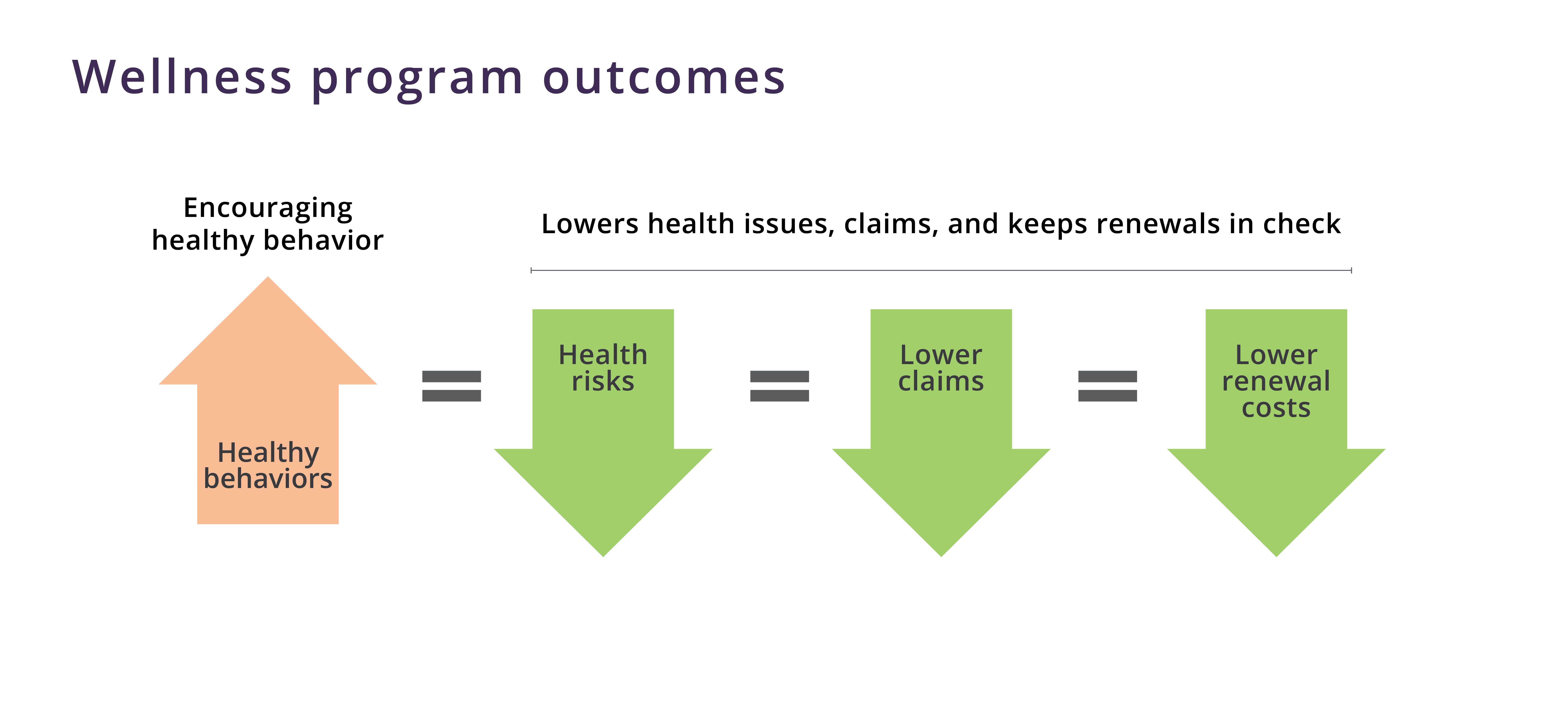
Research shows that “every dollar invested in an employee wellness program can yield as much as $6 in health care savings.”

It’s the type of program that makes the difference
Wellness programs have two components: Lifestyle management and disease management.
A Wellness Programs Study from the Rand Corporation, which included almost 600,000 employees at seven different employer organizations, showed that the two programs combined reduced an employer’s average healthcare cost by approximately $30 per member per month, but that “disease management accounted for 87% of those savings.”
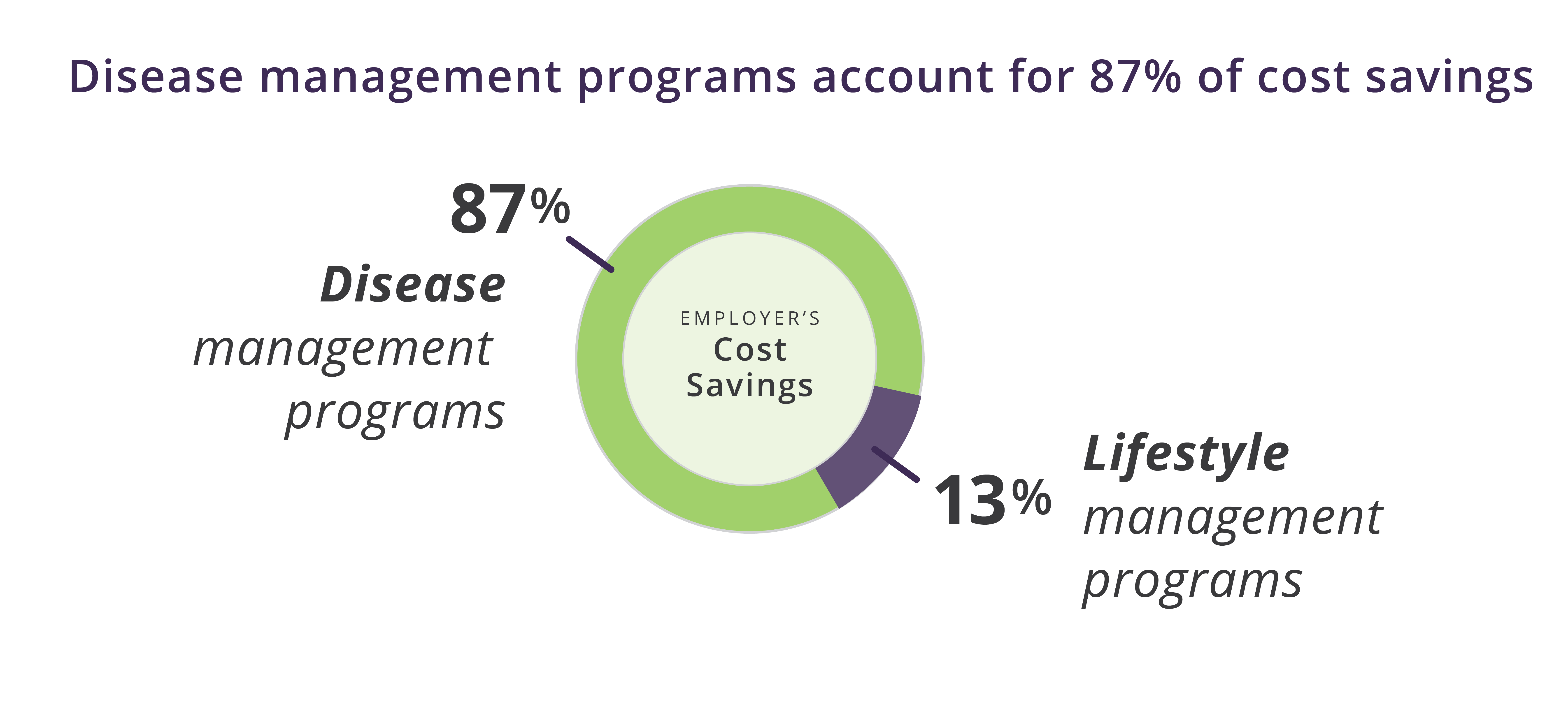
The discrepancy between the ROI from lifestyle management and disease management might be attributed to the fact that wellness programs typically attract employees who are already healthy, therefore the short-term savings may appear low.
Wellness programs show a greater financial impact when they are focused on attracting people who have chronic conditions or those at risk for developing a chronic disease.
For example, a typical disease management program may focus on the high-cost, high-risk diabetes population—those individuals who are incurring hospitalizations due to their illness.
Employers can develop proactive programs that combine disease management and also focus on individuals in the early stages of diabetes or those with pre-diabetes-whether their conditions are known, or not. A combined program focuses on taking advantage of free preventive benefit services to catch early signs of disease AND coaching employees to participate in simple lifestyle changes, such as weight loss, physical activity, medication adherence, blood pressure control, and blood sugar control to prevent disease altogether.
PHP’s Disease Management Program: PHP offers a disease management program such as:
- Diabetes Education: PHP provides diabetes education and offers members the opportunity to upgrade their blood glucose monitoring system to a OneTouch system.
- Tobacco Cessation: PHP has joined the Indiana Department of health to prevent and reduce the use of all tobacco products in Indiana and to protect citizens from exposure to tobacco smoke. PHP offers a variety of options to help members who want to eliminate tobacco in their lives. PHP covers a variety of FDA-Approved tobacco cessation medications at 100%.
- Health Coach: PHP also offers eligible members access to a personal health coach to assist with reducing stress, losing weight, or focusing on a specific health concern.
Addressing the Silent Middle
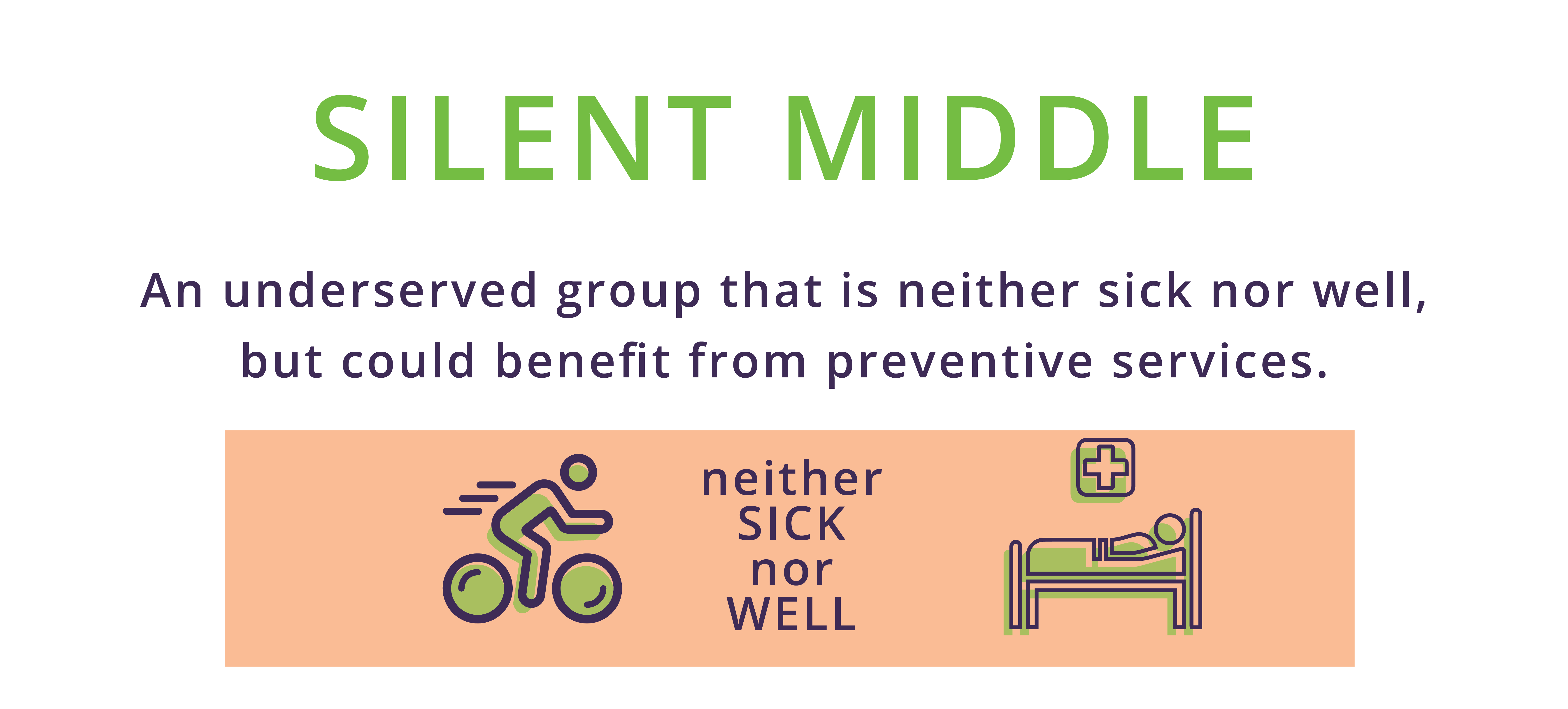
In the video commentary, “Beware the Silent Population,” Dr. Peter Goldbach discusses the “silent population”— people who aren’t healthy and are not taking care of themselves but haven’t yet reached a critical stage and aren’t incurring high cost utilization (such as hospitalizations). If we can’t identify them, we can’t engage these employees to participate in disease management programs, and traditional wellness programs may not be designed to meet their needs.
Approximately 150 million Americans now live with at least one chronic condition.
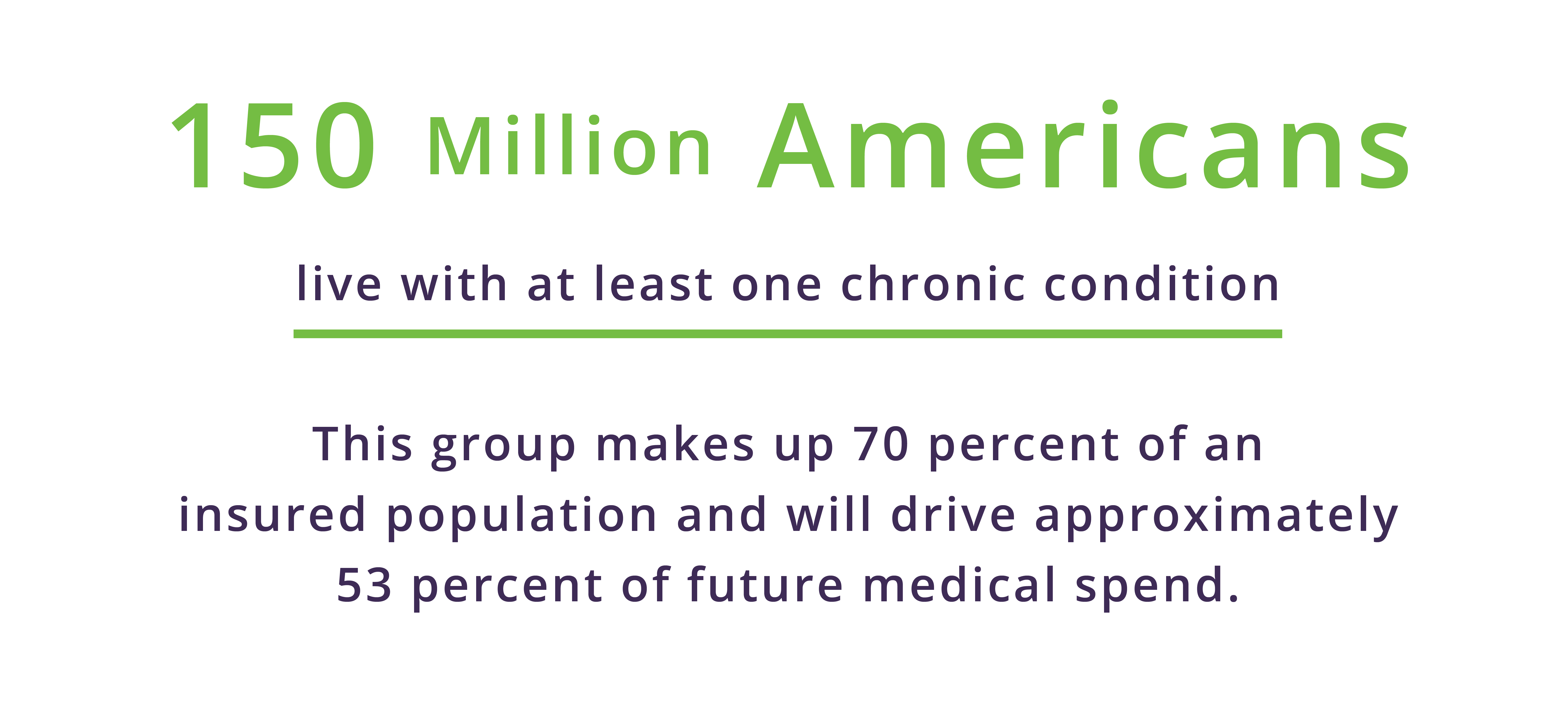
In order to reduce related symptoms, further progression, and associated treatment costs of chronic conditions, disease management solutions must provide personalized interventions to help employees better manage chronic diseases.
Long-term wellness or lifestyle management programs can be extremely beneficial when designed to reach your employees in the way they prefer to receive healthcare information and participate.
This is where PHP has a distinct advantage. We are a local health insurance provider, and we take time to study the data and help employers determine specific measures they can take to improve the health of their employees. Employers in a self-funded or level-funded plan have access to even more general health data about employees on the plan, which can help guide wellness program offerings.
In Review
Effective lifestyle management programs include programs which focus on general wellness, such as:
- Better nutrition
- Sleep management
- Physical activity
Effective disease management programs focus on programs that help mitigate disease complications, such as:
- Following up on medical treatment
- Taking prescribed medications on schedule
- Monitoring health conditions
Disease management addresses immediate health problems, whereas lifestyle management mitigates longer-term health risks.
Both components make a difference, however disease management can have a much larger financial impact.
Typically, more employees participate in a lifestyle management program, but most of health care cost savings come from disease management programs.
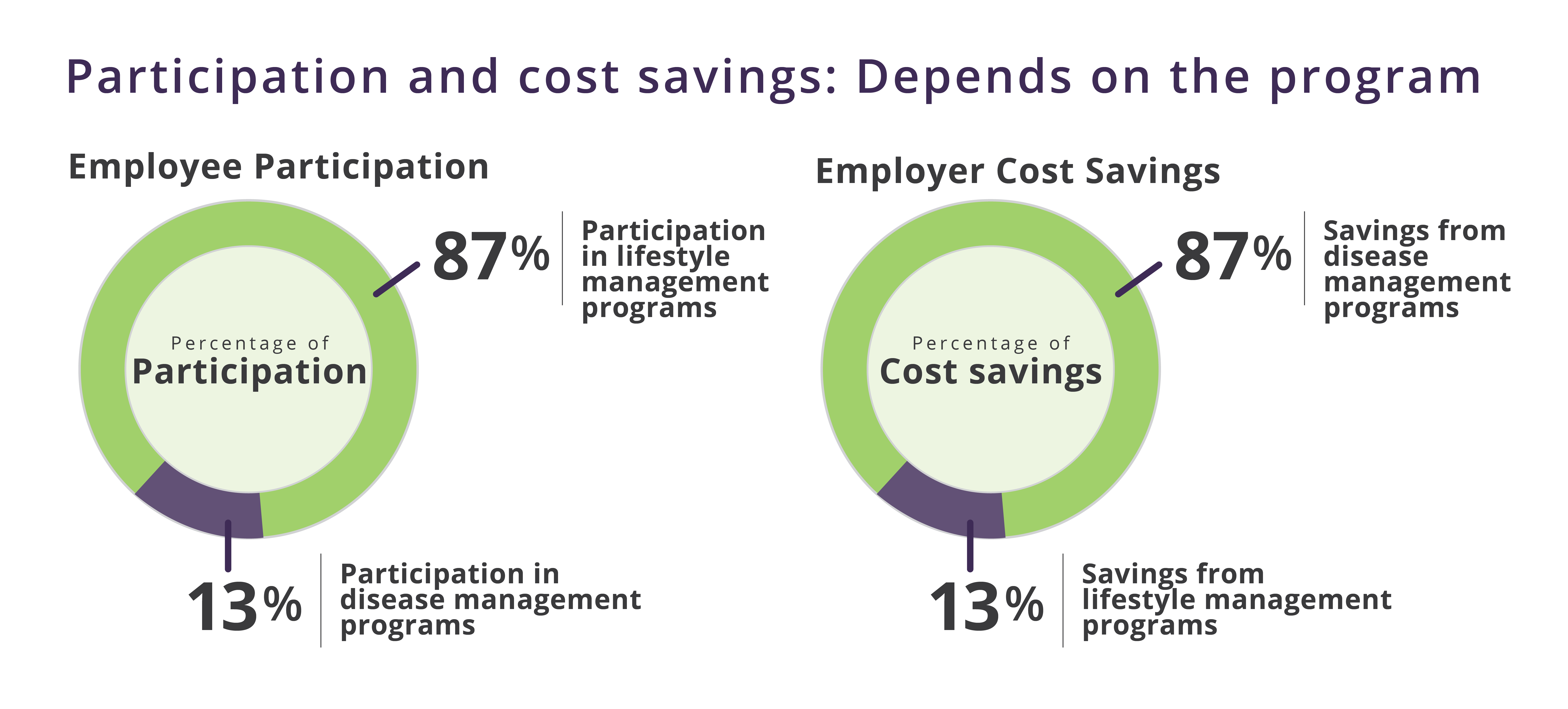
PHP’s Workplace Wellness programs are focused to:
- Identify employee health risks and injuries
- Listen to HR recommendations for employees wellbeing
- Create a custom program for your workplace
- Provide in-person delivery and consultation for our clients
Work with a trusted partner
PHP’s wellness programs address both lifestyle and disease management with chronic care management that provides engagement tools to help employees better manage chronic diseases and reduce costs.
If you are considering an investment in employee wellness, work with a partner that invests in an understanding of your employees’ health conditions and how a wellness program can realistically impact your bottom line. If you’ve already implemented a wellness program, congratulations on taking a proactive step toward your employees health and your company’s future financial health!
PHP’s wellness team is only a phone call away, so give us a call with your questions. We’d love to work with you.



